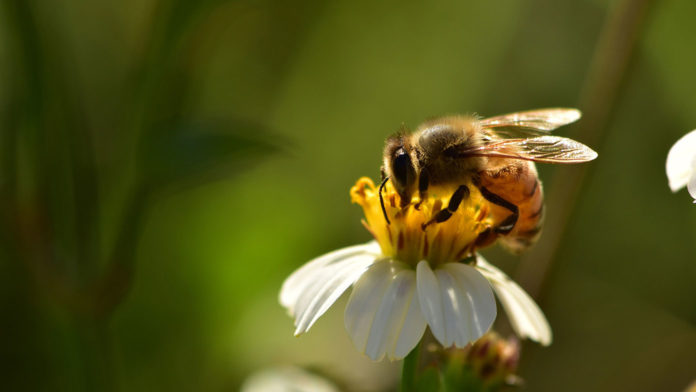Bee populations have been declining since the 1990s, and this poses a big problem for agriculture: food production relies heavily on bees as our most abundant pollinators.
The reasons why bees and colonies are dying are complex, and likely due to a combination of many factors, but a common main suspect is pesticides.
In particular, many researchers point to neonicotinoids, also called neonics, which are a class of pesticides that can paralyze or kill insects that eat enough of it. Until recently, there was little hard evidence of this in the field. Most studies were carried out in the lab over short periods of time.
Two new papers describing the impact of neonics in long-term field studies in Canada and Europe have now been published in Science. While there were some regional differences, pointing to other factors at play, overall the results paint a picture of increased risk and compromised health for struggling bees when exposed to neonics.
How did neonics gain widespread popularity?
Neonics have many characteristics that make them attractive compared to other insecticides. They are the most widely used class of insecticides worldwide, and are commonly used on crops like corn, canola, and soybeans.
They can be applied to seeds instead of being sprayed onto growing plants. This means that the edible tissues of crops contain the pesticide even before plants sprout, but this eliminates spraying pesticides over the entire crop environment. While they are excellent at killing insects that eat crops, they are less toxic to birds and mammals compared to other pesticides.
There is growing concern, however, that bees might be affected because some of the neonics do make their way into pollen and nectar, which are a food source for bees. Several European countries even took the precautionary measure of banning several neonics in response to declining bee populations.
What bees encounter in the fields is a below a lethal dose, but it may still impact their overall health.
How are neonics affecting bee populations in Canada?
The Canadian bee study looked at 55 hives across 11 apiaries in Ontario and Quebec. The apiaries were strategically chosen so that five were near neonic-treated corn, and six that were far from known neonic-treated corn. The researchers then tracked the bees and tested the pollen they gathered for a full growing season: from May to September.
Amro Zayed, professor of biology at York University and corresponding author on the Canadian bee study, says that the pollen his team tested was contaminated with neonics almost across the board for nearly the entire growing season.
This was surprising for a few reasons. Firstly, 99 percent of the pollen tested was coming from wild plants, and not from crops like corn or soybeans. This means that despite not spraying crops with neonics, the neonics on crop seeds are likely getting into the surrounding soil and groundwater, and are later taken up by other plants.
Secondly, although the doses were low, the exposure was persistent and chronic. Not limited to the seed planting season, when neonic dust might spread during planting, exposure lasted for three or four months no matter which apiary the bees were living in.
Once Zayed knew the concentration and duration of neonic exposure bees were seeing in the field, he tested the same conditions on bees in a lab environment. He used an artificial pollen to feed the colonies, half of which were fed pollen spiked with a common neonic, clothianidin.
The neonic-exposed bees kept messier hives and were less able to care for their queen or raise a new queen. When out foraging, they would leave the hive for much longer, suggesting differences in metabolism or energy, or difficulty foraging and finding their way back.
They also died younger, losing five days compared to the neonic-free colonies; this comes out to a 23 percent reduction in lifespan. This toxicity was even higher when mixed with fungicides that are commonly paired with neonics.
The European study largely backed up the Canadian study, but it also saw regional differences. In particular, bees in Germany were not negatively impacted by neonics.
Richard Pywell, lead author of the European study from the Centre for Ecology & Hydrology in the U.K., notes that this likely has to do with the local environment and conditions the bees live in. Germany has a greater variety of flowers than elsewhere in Europe, and wildflowers in particular, meaning more non-crop pollen is available to German bees. They are also less infected by parasites, meaning healthier colonies overall.
So while bees struggle with loss of food sources and other declining health factors, neonics and other agrochemicals could be what pushes them over the edge.
These studies add to the growing evidence that neonics are harming bees. This is in addition to previous findings that neonics harm other insects that are important to aquatic and soil ecosystems. Health Canada is already moving to ban the use of neonics, which may be challenging given how common they are and how long they can persist in soil. Their widespread use in agriculture would also leave a gap that would likely be filled with another class of insecticides.
The many factors that are causing bee colonies to collapse still need to be better understood to form a complete conservation action plan. Responsible pesticide use is just one step among many that will be needed to help our bees return to health.








































